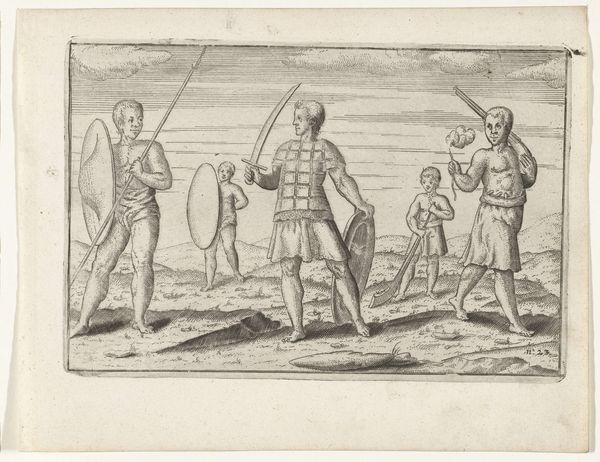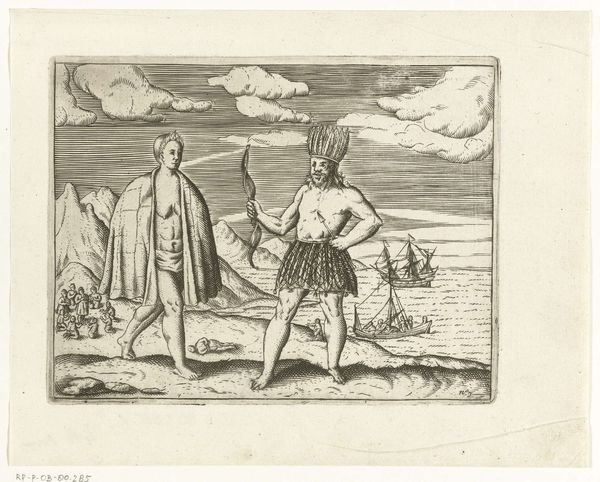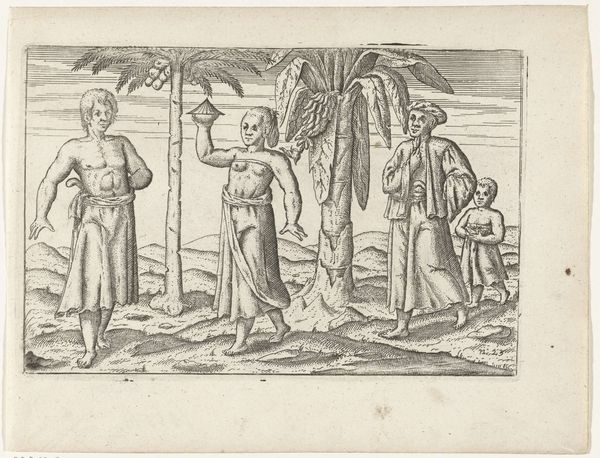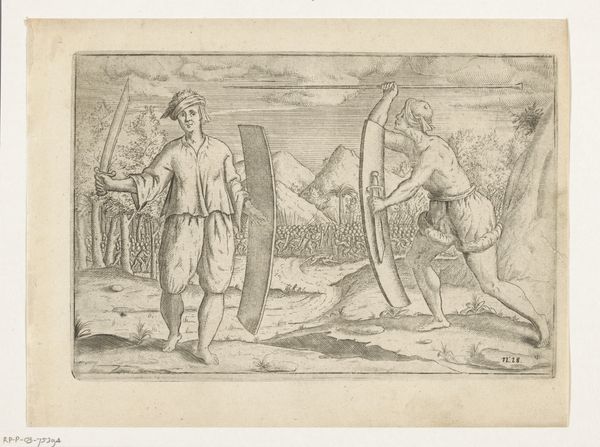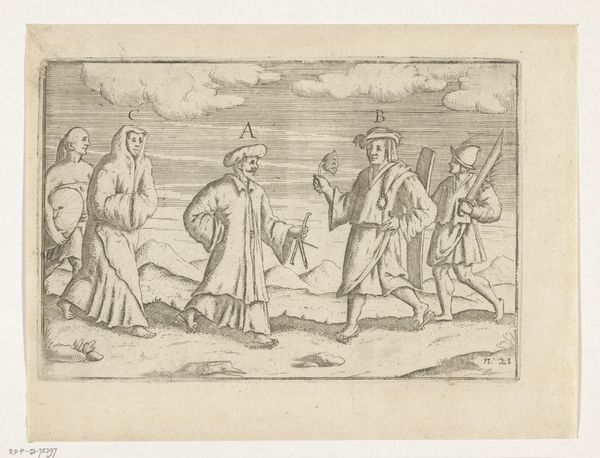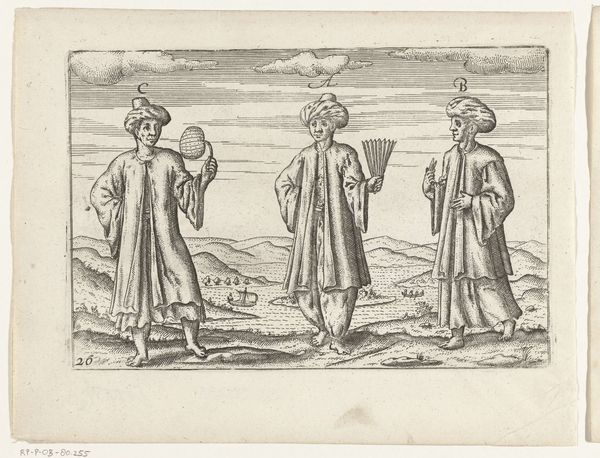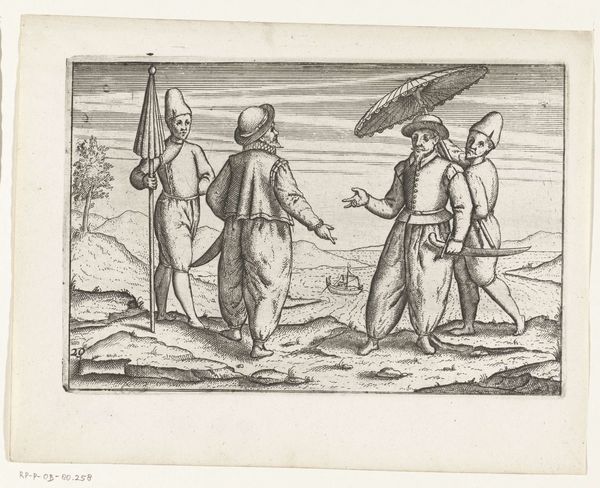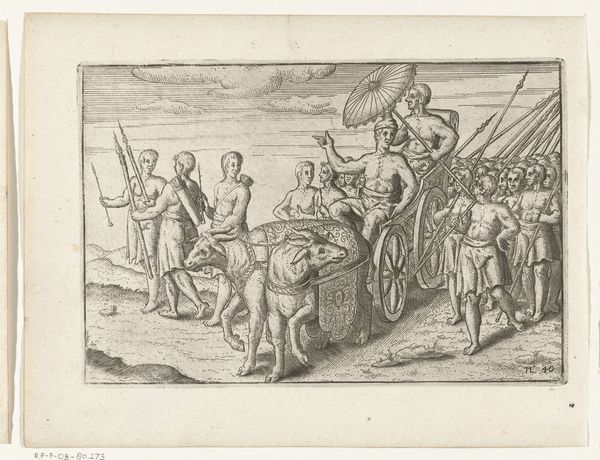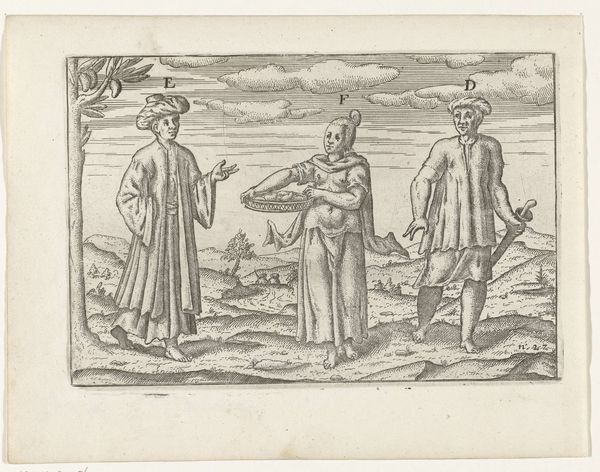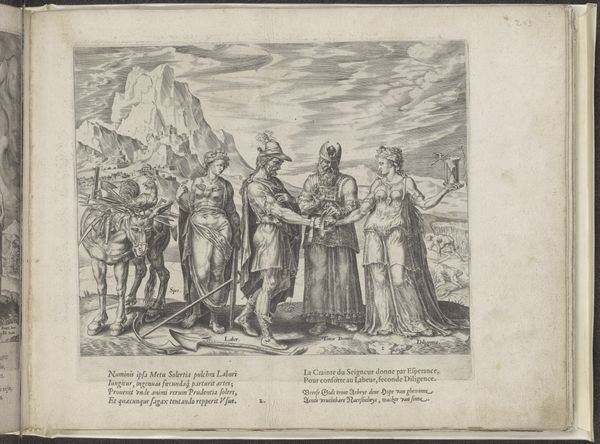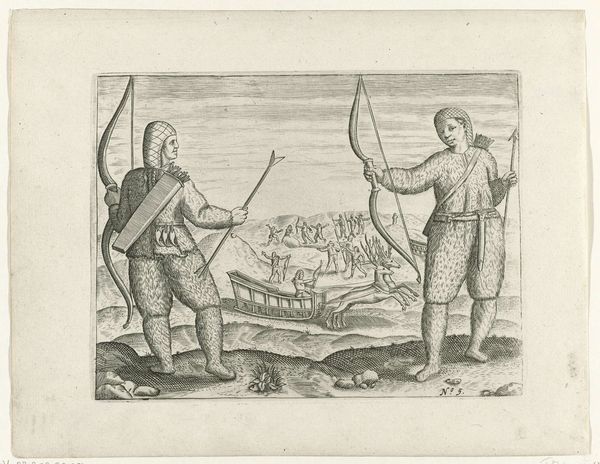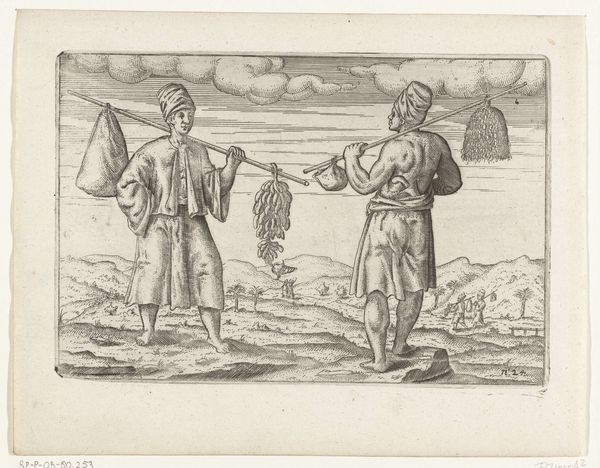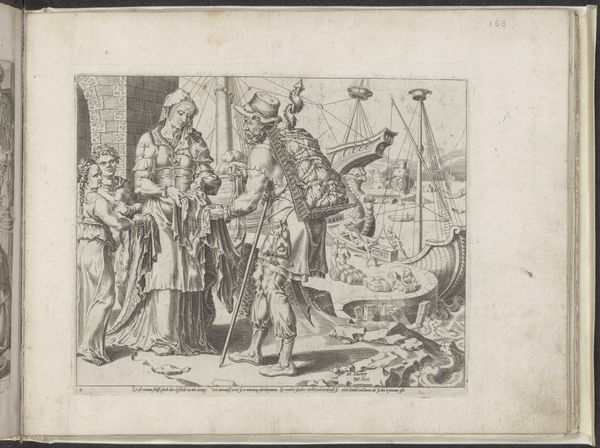
print, engraving
#
narrative-art
# print
#
engraving
Dimensions: height 145 mm, width 220 mm
Copyright: Rijks Museum: Open Domain
Curator: What a striking image! Here we have an engraving titled "Inwoners aan de baai van Antongil (Madagaskar), 1595," a depiction of the inhabitants of Antongil Bay, Madagascar. Its creation is dated between 1597 and 1646. Editor: My initial impression is one of constructed authority. The figures are rigidly posed, almost like specimens on display. There’s a strong sense of European observation and classification at play here. Curator: Precisely! Consider the material limitations of disseminating images at the time. Engravings allowed for the mass production and distribution of visual information. It served to categorize entire populations through readily consumed imagery. The labor and production inherent to an image of this kind highlights the manufacturing of social norms and knowledge. Editor: Absolutely. It reinforces the European gaze upon the 'Other'. Look at the figures themselves—the man in the ornate headdress, the warrior with the shield, and the mother breastfeeding her child. They're presented almost allegorically, stripped of individual agency. It speaks to colonial power structures and the objectification inherent in early ethnographic representation. Curator: Let's note the ships on the water in the background, another nod to commercial exchange in this foreign territory. And this landscape— is it accurately depicted, or is it more symbolic of this “exotic” locale? Editor: Likely the latter. There’s a performative element to these depictions, almost like staging a scene for a European audience. These depictions fed into the prevailing racial and gender stereotypes justifying colonial expansion and dominance. Even the lizard casually placed there seems intended to other the island inhabitants. Curator: Exactly. Every element underscores the construction of Madagascan people as a resource. As images like this circulated widely, they bolstered a European notion of their right to exploit people and land, contributing to an exploitative socio-economic structure. Editor: So, what seems at first glance a straightforward depiction of indigenous people, ends up revealing a deeply problematic power dynamic encoded in the visual language. Curator: Yes. It serves as a reminder of the manufacturing of racial biases and the unequal exchange inherent within such visuals. Editor: A chilling, yet essential, reflection on colonial image-making.
Comments
No comments
Be the first to comment and join the conversation on the ultimate creative platform.
